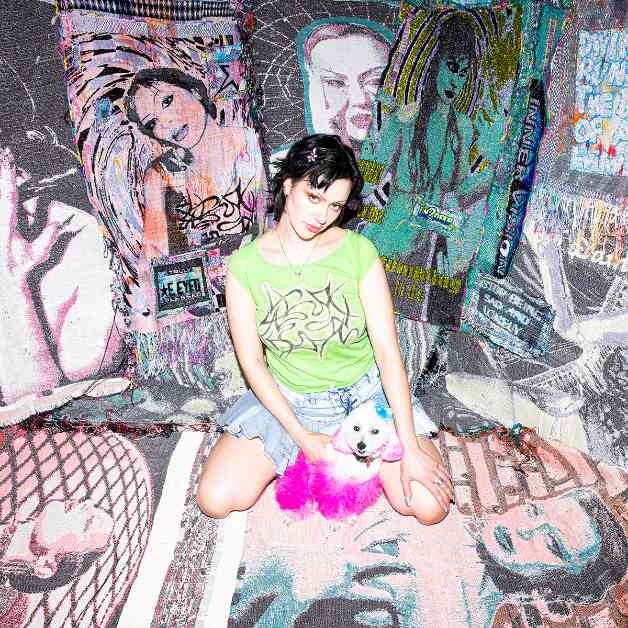When I first met Tali Halpern at SAIC in January of 2023, they confidently shared their big dreams for their art. Halpern, a 30-year-old artist, had been evolving their practice over the years, transitioning from hand-painted streetwear to monumental collage paintings. Their work explored themes like transness, selfhood, love, and lust. By the summer of 2023, Halpern had shifted to creating oversized textiles that captured their grand ambitions. These large textile pieces were showcased at Twelve Ten gallery in their debut exhibition, “?e Eyed.”
Halpern’s art is deeply personal and reflective of their own experiences. Each piece in “?e Eyed” features collages of Halpern, along with found text and patterns made using a digital loom. They use their body to control the pedals and shuttle of the loom, transforming pixels into thread. The resulting textiles are a riot of textures and colors, with added beads and stones to bring a human touch to the machine-made tapestries. Halpern has embraced a cyborg-like approach to their artistry.
The influence of drugs on Halpern’s work is evident, with psychedelic patterns and trippy color schemes reminiscent of psychedelic art. Ketamine played a significant role in their life, leading them to their first 12-step meeting and a journey to recovery. Halpern’s move to LA to work with Navajo weaver Melissa Cody introduced them to textile art, a medium they had not previously explored seriously.
Compulsive behavior has been a recurring challenge for Halpern, with struggles with eating disorders in high school and undergrad. Meeting Dani Miller, a sober singer, was a turning point for Halpern, inspiring them to pursue a sober lifestyle. Their recovery journey has influenced their art, with phrases like “shackled by lust” now balanced with expressions of self-love and hope in their work.
Halpern’s recent exhibition at Twelve Ten gallery showcased their intricate textile pieces, created through a labor-intensive process involving painting, weaving, braiding, and beading. Each piece is a reflection of their intense creative energy, channeled into their art instead of destructive behaviors. Despite challenges like access to digital looms and physical limitations, Halpern remains committed to their art and sobriety.
As they navigate their recovery journey and continue to evolve their art practice, Halpern’s work serves as a testament to resilience, creativity, and self-discovery. Their ability to adapt and reinvent their work reflects a deep commitment to their craft and personal growth. Through their art, Halpern invites viewers to explore themes of identity, self-expression, and the healing power of creativity.


